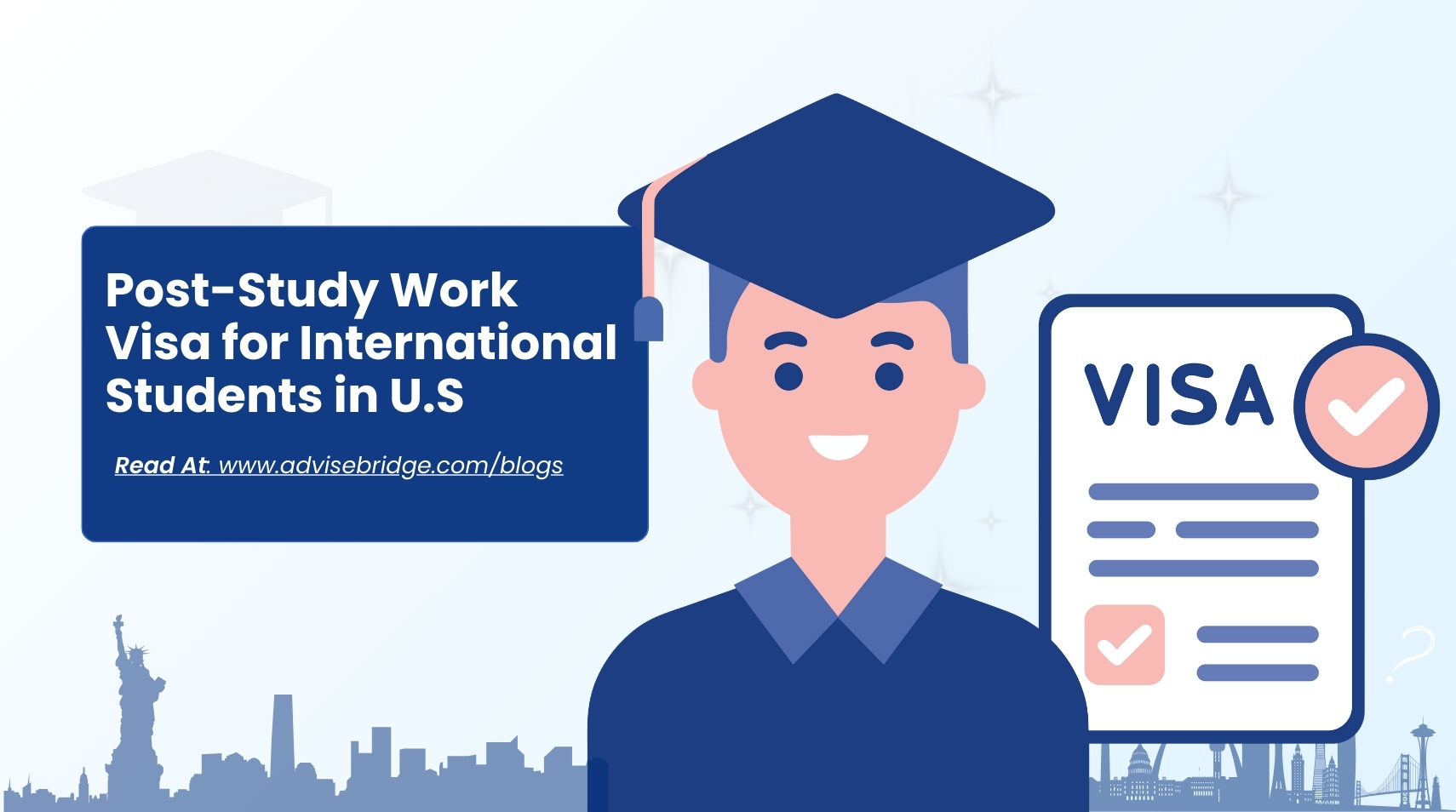For many international students, earning a degree in the United States is just the beginning of the dream. The real goal often lies beyond graduation, staying in the U.S. to gain meaningful work experience, launch a career, and build a life. But what happens after the cap and gown come off?
The good news is there are clear pathways for international students to continue their journey in the U.S. after completing their studies. The key is knowing your options early and preparing ahead.
The most common route is through Optional Practical Training (OPT). If you’re in a STEM field, you may also qualify for a valuable extension. And for many, these opportunities open the door to longer-term visas like the H-1B. Let’s break it all down step by step so you can confidently plan your next move.
What Is Optional Practical Training (OPT)?
Optional Practical Training (OPT) is the first and most widely used post-study work option for international students on an F-1 visa. It’s a temporary work authorization that lets you gain real-world experience in your field of study.
There are two kinds of OPT:
Pre-completion OPT – Work authorization while you are still studying.
Post-completion OPT – Work authorization after graduation.
In total, you can get up to 12 months of OPT. For example, if you use 4 months during your studies, you’ll have 8 months left for after graduation. Most students save the full 12 months for post-completion OPT to maximize their time in the U.S. workforce.
And if you studied a STEM major (Science, Technology, Engineering, or Math), you may be eligible for an additional 24-month STEM OPT extension, bringing your total time to three years. This extension can make a huge difference in gaining career momentum in the U.S.
If you are looking for a more details specifically on OPT, then check out Understanding OPT: Work Opportunities for International Students in 2025 here.
How to Apply for OPT
Applying for OPT requires planning and precision. Here’s how the process works:
1. Talk to Your DSO Early
Your Designated School Official (DSO) is your first stop. They’ll confirm your eligibility, walk you through requirements, and make sure your academic program qualifies. Think of them as your guide through the process.
2. Request an OPT Recommendation
Once you’re ready, your DSO will update your SEVIS record with an OPT recommendation and issue you a new I-20 form. You’ll need this document before you can apply to USCIS.
3. Apply Within the Timeline
Timing is critical.
For pre-completion OPT, you can apply up to 90 days before completing your first academic year.
For post-completion OPT, you can apply up to 90 days before you finish your program and no later than 60 days after graduation.
Since USCIS processing times can take months, applying early is the smartest move.
4. File Form I-765 with USCIS
To officially get work authorization, you’ll submit Form I-765 (Application for Employment Authorization). You can file it online or by mail. Along with your form, you’ll need:
Your new I-20 with OPT recommendation
Passport-style photos
A copy of your passport and F-1 visa
Filing fee (currently $470 online / $520 by mail, but check USCIS for updates)
Once approved, you’ll receive your Employment Authorization Document (EAD card). You can’t begin working until you have the card in hand and your start date arrives.
5. Begin Your Job Search
Unlike some visas, you don’t need a job offer to apply for OPT. However, once your OPT starts, you must work at least 20 hours per week in a role directly related to your field of study. You’re allowed up to 90 days of unemployment during standard OPT, so staying proactive with your job search is crucial.
STEM OPT Extension: An Extra 24 Months
For international students with a STEM degree, the STEM OPT extension is a major opportunity. It provides an extra twenty-four months of work authorization on top of the original twelve, allowing you up to three years of experience in the U.S. job market.
To qualify, your degree must be on the official DHS STEM-eligible list, and your employer must be registered in the E-Verify program, which is a federal system used to confirm employee eligibility. The extension requires a new application to USCIS before your original OPT expires. In addition to Form I-765, you and your employer must complete a detailed training plan using Form I-983, outlining how your job aligns with your degree and contributes to your professional growth.
During this extension, you must remain employed in your field of study, and you cannot accumulate more than a total of 150 days of unemployment across both your regular and STEM OPT periods. This extension is highly valuable because it often gives students the time they need to participate in the H-1B lottery or explore other long-term visa pathways.
Transitioning to an H-1B Visa
For many students, OPT is not the final destination but rather the first step toward something more permanent. The most common next step is the H-1B visa, which is specifically designed for skilled workers in specialty occupations.
To apply for H-1B, your employer must agree to sponsor your petition, and you must have at least a bachelor’s degree in a relevant field. However, because H-1B visas are capped each year, not every applicant is successful. Currently, there are 65,000 visas available under the regular cap and an additional 20,000 reserved for those with advanced U.S. degrees. Each spring, USCIS holds a lottery to select applications. To give you a sense of scale, for the fiscal year 2026, USCIS received more than 350,000 registrations before closing the window, making the process highly competitive.
The good news is that if your F-1 status is set to expire while your H-1B petition is pending, you may qualify for what’s called a cap-gap extension. This provision allows you to stay legally in the U.S. until your H-1B visa takes effect, avoiding any disruption in your work authorization.
Tips to Stay on Track
The process of securing post-study work authorization can feel overwhelming, but staying proactive makes a big difference. Always keep close communication with your DSO, they are your best resource for navigating deadlines and requirements. Plan your application timeline well in advance, since even a small delay can put your status at risk. Make sure your job clearly aligns with your field of study, and don’t forget to update SEVIS with any new employment information. These small but critical steps will protect your legal status and keep your path to long-term opportunities open.
Final Thoughts
The transition from international student to professional in the U.S. is challenging, but it is absolutely possible. OPT and STEM OPT provide a valuable bridge between the classroom and the workplace, and many students use this period as a stepping stone to the H-1B visa and beyond.
The key is to start early, stay organized, and lean on the guidance from AdviseBridges' experts. With the right preparation, your graduation doesn’t have to mark the end of your U.S. journey, it can be the beginning of a thriving career and an exciting future.







